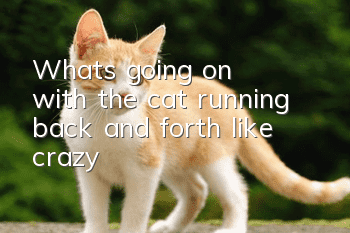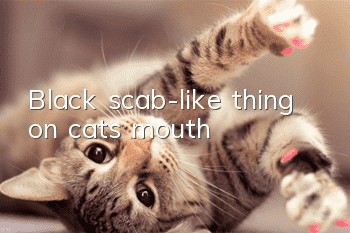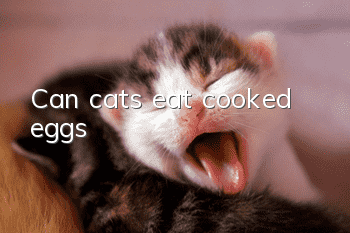Central stimulant drugs for cats, drug dosage and usage!

Central nervous system stimulants for cats, drug dosage and usage! Some central nervous system stimulants such as caffeine can relieve the symptoms of nervous depression and respiratory failure in cats.
Central stimulant drugs are drugs that can excite the central nervous system. We know that nerves are spread throughout our body, and this is also true for cats. The central nervous system can conduct various sensations and regulate metabolism in the body, so central nervous system drugs are based on the site of action. It can be divided into three categories: brain stimulants, medullary stimulants and spinal cord stimulants.
Brain stimulants such as xanthines can increase the excitability of the cerebral cortex and promote brain cell metabolism. Medulla bulbar stimulants can directly or indirectly act on the respiratory center of the medulla oblongata, increasing respiratory frequency and depth. Spinal cord stimulants selectively block the effects of inhibitory neurotransmitters on neurons.
We know that the central nervous system of cats has a self-healing function, and the central nervous system of infected cats will suffer from severe and extensive demyelination. The central nervous system has the ability to form new myelin sheaths wherever neurons are not destroyed. Although recovery was slow in those cats that returned to a normal diet, all previously demyelinated axons remyelinated. However, these restored myelin sheaths are not as thick as healthy phospholipids. Therefore, in order for the central nervous system to function normally, cats sometimes need to take some central nervous system drugs. So what are the common central nervous system drugs?
1. Caffeine
Caffeine is a white mercerized crystal or crystalline powder , odorless, bitter, slightly soluble in water. A small dose of this product can enhance the excitation process of the cerebral cortex, boost the spirit and reduce fatigue. Increasing the dose can stimulate the life center of the brain, which can deepen and speed up breathing, increase blood pressure, and improve blood circulation.
Caffeine is easily absorbed when taken orally or injected. Pharmacologically, caffeine can produce a wide range of excitatory effects on the central nervous system, with the cerebral cortex being particularly sensitive. A small dose can increase sensitivity to the outside world. In other respects, caffeine can rescue respiratory depression and circulatory failure caused by various reasons and counteract depressant poisoning. Combined with bromide, it can regulate the excitatory and inhibitory processes of the cerebral cortex to treat neurosis. It can also be used with antipyretic and analgesic drugs. Combined use can enhance the analgesic effect. Combined use with ergotamine can treat migraine. Caffeine can also excite the smooth muscles of the gastrointestinal tract. Large doses can relieve gastrointestinal spasm and relax the smooth muscles of the bronchus and biliary tract.
In terms of specific symptoms, caffeine mainly fights against the depressive state caused by overdose of central depressant drugs, respiratory failure caused by serious infectious diseases, etc.
2. Nikshami
Nikshami is colorless or light Yellow oily liquid, slightly smelly, bitter, and hygroscopic. Nikosamide can directly excite the respiratory center of the medulla oblongata, making breathing deeper and faster. It can also be done by stimulating the carotid sinus andThe chemoreceptors of the aortic body reflexively excite the respiratory center and increase the sensitivity of the respiratory center to carbon dioxide. It also has a weak excitatory effect on the cerebral cortex, vasomotor center and spinal cord, but has no direct excitatory effect on other organs. Excessive dosage can cause convulsions. This product has the characteristics of mild action, wide safety range and low toxicity.
Nikosamide mainly directly stimulates the medulla oblongata center and is used to treat cats with carbon dioxide poisoning, drowning and suffocation. It is usually injected intravenously.
3. Strychnine
Strychnine is also called strychnine. It is an indole alkaloid isolated from the traditional Chinese medicine Nux vomica. Found in the seeds of the Strychnosaceae plant Strychnosus vomnifera and Luzon bean seeds. It is an orthorhombic prism crystal, extremely bitter in taste and extremely poisonous in nature. Strychnine has a highly selective excitatory effect on the spinal cord, which can increase the excitability of spinal cord reflexes and easily cause convulsions. It also has a certain stimulating effect on the cerebral cortex and the hearing, visual and medulla oblongata respiratory centers. Clinically used as a central stimulant, it can also be used for amblyopia, hemiplegia and paralysis, as well as against toxic reactions caused by injection of streptomycin. This product is quickly absorbed after oral administration and has a large distribution capacity in the body. The blood concentration of strychnine poisoning is 1mg/L.
Strychnine can be used to rescue cats from rodenticide poisoning. Strychnine acts on all levels of the central nervous system. Pay attention to the dose when using it. Large doses can cause poisoning.
The dosage must be paid attention to with central nervous system drugs. In small doses, the selective action site of the drug is relative. As the dose increases, the stimulant effect of the drug is enhanced, the scope of action is expanded, and there is no It is selective, causing extensive and strong excitement in the central system, causing convulsions, and aggravating the hypoxia of brain cells, so it must be used with caution.
- What should cats eat if they have bad breath?
- What are the benefits of cat lecithin?
- Blisters on cat's mouth
- How to treat ringworm in cats?
- Cat Training: Cage, Summoning and Family
- How many days will it take for a cat's nails to grow back if they are cut to the bleeding line?
- How to train a cat to use a scratching post, these tips you need to know
- What cats are the most popular? Let’s take a look at the top ten most popular pet cats!
- What to do if a female cat is too hot to give birth to kittens in summer
- What should beginners pay attention to when raising cats?



